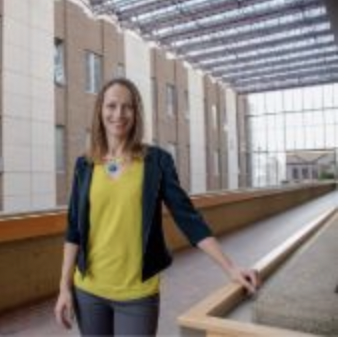Addressing poverty through entrepreneurship
The first U.N. Sustainable Development Goal is to end poverty in all its forms, everywhere. It’s a challenge that Angelique Slade Shantz, a professor of strategy, entrepreneurship and management in the Alberta School of Business, spends a lot of time thinking about.
Slade Shantz’s research focuses on the role of markets in addressing poverty in developing countries. Right now she’s trying to understand how to create effective entrepreneur training for people living below the international poverty line. Her work also investigates business cooperatives and new research approaches, and she teaches a course in social entrepreneurship.
Slade Shantz talked with me about her research into entrepreneurship and reducing poverty, as well as the potential for future workplaces that prioritize employees.
How can entrepreneurship help alleviate poverty?
Entrepreneurship research often by default conceptualizes entrepreneurship as something individuals do because they’ve identified an innovative business opportunity, which we refer to as “opportunity-driven entrepreneurship.” But in most parts of the world, people are forced into entrepreneurship because there’s a lack of employment options. This is a very different form of entrepreneurship, one which we refer to as “necessity-driven entrepreneurship.”
The question that I and some of my colleagues have been asking is, if someone is forced into entrepreneurship out of necessity, what are the tools that we have as business school professors – both as teachers and researchers – have that may help these entrepreneurs to identify opportunities that will allow them to thrive given the resources they have available?
What is your research telling you about how to train people to become better entrepreneurs?
We worked with Desjardins Bank on a study in Sri Lanka. Desjardins reported that entrepreneurs who were applying for financing via cooperative banking came to them with the same business ideas over and over again. Too many people doing the same thing doesn’t grow the economic pie. In fact, it shrinks the economic pie because everybody is competing for a smaller and smaller slice. They asked us to design an entrepreneurship training program that would help entrepreneurs come up with more novel or innovative business ideas.
We designed two versions of the training, which focused on encouraging entrepreneurs to engage in what we called “micro-experimentation,” or innovation at a very small scale. The content of the training was the same in both, but framed differently. In one condition we used the more traditional approach, that we called the “Bill Gates” approach, which uses examples of successful entrepreneurs to inspire micro-experimentation. We were providing examples that sent the message: this is a good thing to do, and if you do it then good things will come to you.
The other approach to framing used examples of things people were already experimenting with in their lives—their gardening, their cooking, their housekeeping. It said: you’re already experimenting in lots of other domains in your life, and all you need to do is transfer those same types of behaviours into your business domain.
The second approach was more successful, and we saw more people trying things like testing new locations to sell their goods, changing signage, offering new products, and offering deals.
You’ve also researched worker cooperatives. You did an experiment in Ghana, where a number of cooperatives making artisanal goods were failing because of conflict between members. What did you discover in that experiment?
There’s a strong debate within the management literature about the role of hierarchy and how much hierarchy is too much in a business. Particularly within cooperatives, we don’t know much about how effective hierarchy is at leading a cooperative because of its flat ownership structure.
We partnered with an NGO working with cooperatives in Ghana to co-design an experiment with two different cooperative structures. One group had a structured hierarchy—an elected chairperson, a vice-chairperson, a secretary, an organizer, and then under that leadership group was everyone else. The other group had a completely flat organizational structure. Our partner organization said, “If there’s no leadership, then no one is going to do anything. You don’t know what you’re talking about.”
Surprisingly, the cooperatives that had been structured without any hierarchy at all were experiencing higher levels of collective psychological ownership and lower levels of conflict.
COVID-19 has led to a rise and extreme poverty globally, and the gap between the highly wealthy and the impoverished continues to grow in Canada and elsewhere. What can businesses do to ensure they are fair to their employees?
I think that in the last couple of years, businesses in all industries have had a bit of a wakeup call. I talk to people in many different industries, and everybody says the same thing: It’s really hard to find employees right now.
Along with several colleagues, I am working on a research project that is interviewing Albertans who have turned to entrepreneurship during COVID. What we are hearing is that people are deciding that they don’t just want to work for money; they want to work to find meaning in their lives, and for something they feel excited and passionate about, and where they have the autonomy to explore different ways of doing things.
I think businesses in all industries are facing a bit of a reckoning where they’re going to have to think more carefully about what kind of workplace they want to provide, and how they’re going to be incentivizing their employees—and I don’t mean only financially.
I do think that that’s going to reshape the workplace of the future to likely be a more satisfying work environment for employees. I’m optimistic.
————

Angelique Slade Shantz is a professor in the department of Strategy, Entrepreneurship and Management in the Alberta School of Business and an affiliate of the Sustainability Council. Along with her family, she is a founder of Rose Hill Orchard in Lake Country, B.C..